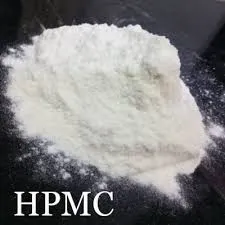
wrz . 22, 2024 21:14 Back to list
how is hydroxyethyl cellulose made
Hydroxyethyl cellulose (HEC) is a soluble polymer derived from cellulose, widely used in various industries due to its excellent thickening, gelling, and film-forming properties. The production of HEC involves a series of chemical processes that modify natural cellulose to enhance its functionality.
The first step in the manufacture of HEC is the extraction of cellulose, typically obtained from plant sources such as wood pulp or cotton. This cellulose is in its natural, unmodified form. The extracted cellulose is then subjected to an etherification process. This is where the transformation into hydroxyethyl cellulose begins.
In the etherification process, cellulose reacts with ethylene oxide, a highly reactive compound. This chemical reaction occurs in an alkaline environment, typically using sodium hydroxide (NaOH), which activates the cellulose and facilitates the substitution of hydroxyl groups (-OH) on the cellulose chain with hydroxyethyl groups (-CH2CH2OH). The extent of this substitution can be controlled, allowing manufacturers to tailor the properties of the resulting HEC for specific applications.
how is hydroxyethyl cellulose made

Following the etherification, the reaction mixture undergoes purification to remove any unreacted reagents and by-products. This purification step is crucial to ensure the quality of the final product. After purification, the hydroxyethyl cellulose is usually dried and powdered to produce a fine granule or powder used in various formulations.
HEC's solubility in cold water and its ability to form stable gels make it valuable in industries such as pharmaceuticals, cosmetics, and food. In pharmaceutical products, it serves as an excipient, helping to control the release of active ingredients. In cosmetics, HEC is utilized as a thickening agent in creams, lotions, and gels, enhancing texture and stability. Additionally, in the food industry, HEC acts as a stabilizer and thickener, improving the mouthfeel and viscosity of food products.
In summary, the production of hydroxyethyl cellulose involves the extraction of cellulose, followed by etherification with ethylene oxide, purification, and drying. Its versatile properties make HEC a crucial ingredient in many commercial products, highlighting the importance of cellulose derivatives in modern applications.
-
The Widespread Application of Redispersible Powder in Construction and Building Materials
NewsMay.16,2025
-
The Widespread Application of Hpmc in the Detergent Industry
NewsMay.16,2025
-
The Main Applications of Hydroxyethyl Cellulose in Paints and Coatings
NewsMay.16,2025
-
Mortar Bonding Agent: the Key to Enhancing the Adhesion Between New and Old Mortar Layers and Between Mortar and Different Substrates
NewsMay.16,2025
-
HPMC: Application as a thickener and excipient
NewsMay.16,2025
-
Hec Cellulose Cellulose: Multi functional dispersants and high-efficiency thickeners
NewsMay.16,2025







